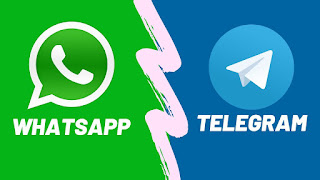Staying focused on work can be a challenge when clients expect to be able to contact you 24/7. Chip Camden shares his thoughts about the effectiveness and hindrances of some common ways to communicate with clients.
Any IT consultant who has been through at least one failed project can tell you that accurate and timely communication with your client is one of the most important factors of success. But it’s also possible to have too much communication — or rather, too frequent. Too many interruptions, even when they’re from your client, can fragment your concentration to the point that you can’t get anything accomplished.
Here’s my take on the effectiveness of communicating with clients via instant messaging (IM), phone, e-mail, wikis/blogs/Web sites, and face-to-face meetings.
IM
I’ve tried using IM with a couple of my clients. While it speeds up communication, the interrupt factor is too high unless you can effectively ignore it when you need to concentrate. Clients will often shoot you “just one quick question” – it may only take a few minutes to answer, but that interruption can cost you an hour or more of reassembling the ideas you were holding in your head before your chat client bleeped it out of your thoughts. Of course, you can always set your status to Busy, but is there ever a time when you’re not busy?
Andréa Coutu asks “Should you give clients your IM account info?” She makes a good case for only giving her IM address to clients that have become so trusted that they’re more like personal friends.
Phone
I’ve seriously considered going completely phoneless but, of course, you need to have one sometimes. A ringing phone is even more of an interruption than IM. Besides that, half of the calls are marketers or outsourcing firms. I have been known to turn off the ringer while working, and I always check caller ID before answering. I’ll let it go to the answering service if it isn’t one of my clients — and sometimes even if it is a client when I’m deep in a project. I try to train my clients to schedule calls, so they aren’t an interruption.
By contrast, many consultants can always be reached by mobile phone, even when they’re on another client’s site. I don’t even carry a mobile phone unless I’m traveling.
E-mail
Most of my client communication is via e-mail. E-mail has a number of benefits: It doesn’t interrupt me; I check my e-mail at regular intervals during the day, when I’m between projects or on a break; I can take more time to think about my response before I have to answer; and I automatically have a written record of the conversation.
But e-mail does have its drawbacks: It isn’t very secure or reliable, and the spam noise can sometimes drown the signal. Also, it doesn’t happen often, but occasionally an e-mail will be delayed or never received at all.
Private blogs, wikis, or other Web sites
A Web site that has secure access and rules for who can modify which content is probably the best solution currently available for reliable written communication without interruptions. If the site provides a secure RSS feed for new entries, you can subscribe in a feed reader to find out about them — when you want to know, instead of the moment they’re authored. This approach has yet to receive widespread adoption, perhaps because it takes some thought and effort to set these sites up, whereas almost everyone already has e-mail.
In person
There is still no more effective medium than a face-to-face meeting. It prevents you from doing everything else, which means that you get concentrated communication at the cost of dedicated time. So, it needs to be planned.
The worst case is the in-person interruption. When someone drops by and asks, “May I interrupt you for a moment?” I usually respond, “You already have.” That channel needs to be reserved for emergencies.
On the other hand, a planned in-person meeting can be one of the most effective ways to brainstorm or design solutions — just make sure that someone is taking good notes. Being a mostly remote worker makes the cost of in-person communication even higher for me — it usually involves a day or two of travel time. But I like it that way because clients don’t abuse face time with interruptions.
Which communication methods work best for you?
What’s your preferred medium for communicating with clients? Do you provide different clients with different options for contacting you? (For instance, do you only give some clients your IM address?) Do you carry a mobile device with you at all time so clients can reach you? How do you manage interruptions? Share your answers in the discussion forum.
By: Chip Camden
Source: http://blogs.techrepublic.com.com/project-management/?p=239
Instant messaging news, reviews, software. LAN instant messaging, Corporate instant messaging, Business messengers, Intranet communication solutions.
Subscribe to:
Post Comments (Atom)
Durov: The phone of the richest man in the world was hacked through WhatsApp.
The founder of "VKontakte" and Telegram Pavel Durov said that back in November 2019 he warned about the vulnerability of the Whats...

-
Computer's personal often face problems when they have to take a break from their PC for some time and can’t answer to emails and instan...
-
The founder of "VKontakte" and Telegram Pavel Durov said that back in November 2019 he warned about the vulnerability of the Whats...
-
Primus Telecommunications Group, Inc. has entered into an agreement with Microsoft Corp. to provide Voice-over-Internet Protocol (VoIP) serv...

No comments:
Post a Comment